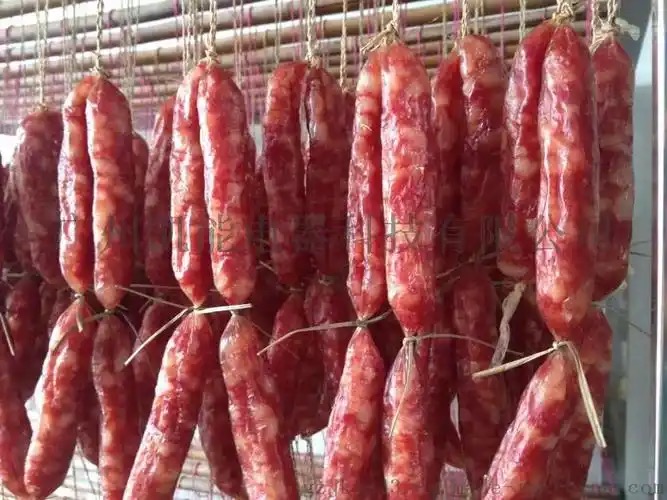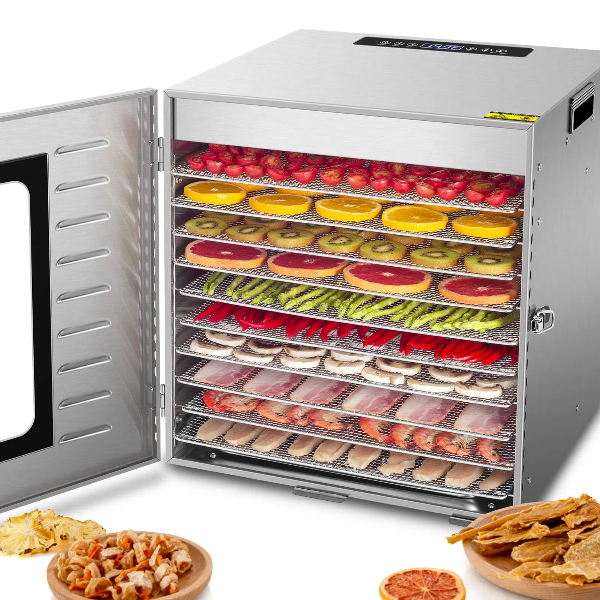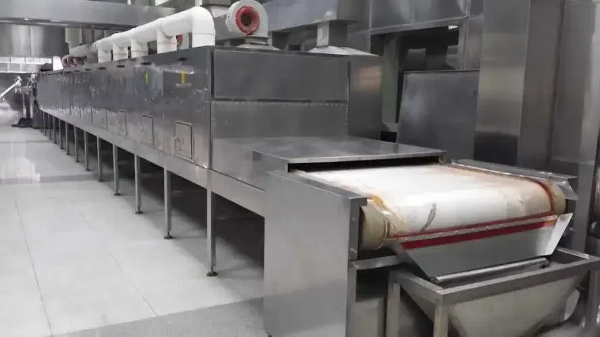
Content Menu
● Understanding Heat Pump Dryers
● Benefits of Heat Pump Dryers for Food Processing
● Key Considerations When Buying a Heat Pump Dryer
>> Capacity and Size
>> Temperature Range
>> Energy Efficiency Ratings
>> Control Systems
>> Construction and Durability
>> Ease of Maintenance
>> Cost and Budget
>> Brand Reputation and Support
>> Warranty and Service Agreements
>> User Reviews and Testimonials
● Additional Considerations for Food Drying
>> Compliance with Food Safety Standards
>> Integration with Existing Equipment
>> Training and Support
>> Environmental Impact
>> Future Scalability
● Conclusion
● Frequently Asked Questions
>> 1. What types of food can be dried using a heat pump dryer?
>> 2. How does a heat pump dryer differ from a traditional dryer?
>> 3. What is the average drying time for food in a heat pump dryer?
>> 4. Are heat pump dryers suitable for small businesses?
>> 5. What maintenance is required for a heat pump dryer?
When it comes to drying food, the choice of equipment can significantly impact the quality, efficiency, and safety of the final product. For businesses in Australia looking to invest in food drying technology, heat pump dryers have emerged as a popular option. This article will explore the essential factors to consider when purchasing a heat pump dryer, particularly for food processing applications, and provide insights into the benefits and features of these machines.

Understanding Heat Pump Dryers
Heat pump dryers are advanced drying systems that utilize a heat pump to transfer heat from the environment to the drying chamber. Unlike traditional dryers that expel hot air, heat pump dryers recycle the air within the system, making them more energy-efficient and environmentally friendly. This technology is particularly beneficial for food drying, as it allows for lower drying temperatures, preserving the nutritional value and flavor of the food.
Benefits of Heat Pump Dryers for Food Processing
1. Energy Efficiency: Heat pump dryers consume significantly less energy compared to conventional drying methods. This is crucial for food manufacturers looking to reduce operational costs.
2. Temperature Control: The ability to maintain lower drying temperatures helps prevent the degradation of sensitive nutrients and flavors in food products. This is especially important for fruits, vegetables, and herbs.
3. Moisture Control: Heat pump dryers effectively manage moisture levels, reducing the risk of spoilage and ensuring that the final product has a longer shelf life.
4. Versatility: These dryers can handle a wide range of food products, from fruits and vegetables to meats and herbs, making them suitable for various applications in the food industry.
5. Environmentally Friendly: By recycling air and using less energy, heat pump dryers contribute to a more sustainable food processing operation.
Key Considerations When Buying a Heat Pump Dryer
Capacity and Size
When selecting a heat pump dryer, consider the capacity that aligns with your production needs. The size of the dryer should accommodate the volume of food you plan to process. Larger capacities are ideal for high-volume operations, while smaller units may suffice for smaller businesses or niche products. For instance, a small-scale producer of dried herbs may only need a dryer with a capacity of 50 kg, while a larger operation focusing on dried fruits might require a unit that can handle 200 kg or more.
Temperature Range
Different food products require different drying temperatures. Ensure that the heat pump dryer you choose can operate within the temperature range suitable for the specific foods you intend to dry. For instance, delicate herbs may require lower temperatures compared to fruits or vegetables. A good heat pump dryer should allow you to set precise temperatures, typically ranging from 30°C to 70°C, depending on the product being dried.
Energy Efficiency Ratings
Look for models with high energy efficiency ratings. This not only helps in reducing operational costs but also aligns with sustainability goals. Energy-efficient models may have features such as variable speed fans and advanced heat recovery systems. Investing in a dryer with a good energy rating can lead to significant savings over time, especially in large-scale operations where energy costs can be substantial.

Control Systems
Modern heat pump dryers come equipped with advanced control systems that allow for precise monitoring and adjustment of drying parameters. Look for models with digital displays, programmable settings, and automatic moisture sensors to ensure optimal drying conditions. These features can help automate the drying process, reducing the need for constant supervision and allowing for more consistent results.
Construction and Durability
The materials used in the construction of the dryer are crucial for longevity and performance. Stainless steel is often preferred for food processing equipment due to its resistance to corrosion and ease of cleaning. Ensure that the dryer is built to withstand the rigors of a commercial kitchen environment. Additionally, check for features like insulated walls and robust seals to enhance energy efficiency and maintain consistent temperatures.
Ease of Maintenance
Consider the maintenance requirements of the heat pump dryer. Models that are easy to clean and maintain will save you time and reduce downtime in your production process. Look for features such as removable filters and accessible components for routine maintenance. Regular maintenance is essential to keep the dryer operating efficiently and to extend its lifespan.
Cost and Budget
While it’s essential to invest in quality equipment, it’s also important to stay within your budget. Compare different models and brands to find a heat pump dryer that offers the best value for your investment. Remember to factor in long-term savings from energy efficiency and reduced spoilage. It may be tempting to choose the cheapest option, but investing in a reliable, high-quality dryer can pay off in the long run.
Brand Reputation and Support
Research the reputation of the manufacturer and the availability of customer support. A reliable brand with a good track record in the food processing industry will provide peace of mind and assistance in case of any issues. Look for manufacturers that offer comprehensive warranties and responsive customer service.
Warranty and Service Agreements
Check the warranty offered by the manufacturer. A longer warranty period can indicate confidence in the product’s durability. Additionally, consider service agreements that provide regular maintenance and support. This can be particularly beneficial for businesses that rely heavily on their drying equipment.
User Reviews and Testimonials
Before making a purchase, read user reviews and testimonials. Feedback from other food processing businesses can provide valuable insights into the performance and reliability of the heat pump dryer you are considering. Look for reviews that mention specific features, ease of use, and overall satisfaction with the product.
Additional Considerations for Food Drying
Compliance with Food Safety Standards
When purchasing a heat pump dryer for food processing, ensure that it complies with local food safety regulations. This includes materials used in construction, ease of cleaning, and the ability to maintain proper hygiene standards. Equipment that meets these standards will help ensure the safety and quality of your dried products.
Integration with Existing Equipment
Consider how the heat pump dryer will fit into your existing production line. It should integrate seamlessly with other equipment, such as washing, cutting, and packaging machines. This can help streamline your operations and improve overall efficiency.
Training and Support
Ensure that the manufacturer provides adequate training and support for your staff. Understanding how to operate and maintain the dryer properly is crucial for maximizing its performance and lifespan. Look for manufacturers that offer training sessions or detailed manuals to assist your team.
Environmental Impact
As sustainability becomes increasingly important in the food industry, consider the environmental impact of your drying operations. Heat pump dryers are generally more eco-friendly than traditional dryers, but you can further enhance sustainability by implementing practices such as recycling water used in the drying process or utilizing renewable energy sources.
Future Scalability
Finally, think about your future needs. If you anticipate growth in your business, consider investing in a heat pump dryer that can scale with your operations. This might mean choosing a model with a higher capacity or one that can be easily upgraded with additional features.
Conclusion
Investing in a heat pump dryer for food processing can significantly enhance your production capabilities while ensuring high-quality products. By considering factors such as capacity, temperature control, energy efficiency, and brand reputation, you can make an informed decision that aligns with your business needs. As the demand for dried food products continues to grow, having the right drying technology in place will position your business for success.

Frequently Asked Questions
1. What types of food can be dried using a heat pump dryer?
Heat pump dryers can be used to dry a variety of foods, including fruits, vegetables, herbs, and meats.
2. How does a heat pump dryer differ from a traditional dryer?
Unlike traditional dryers that expel hot air, heat pump dryers recycle air, making them more energy-efficient and capable of operating at lower temperatures.
3. What is the average drying time for food in a heat pump dryer?
Drying times vary depending on the type of food and its moisture content, but generally, heat pump dryers take longer than traditional dryers due to lower temperatures.
4. Are heat pump dryers suitable for small businesses?
Yes, heat pump dryers come in various sizes and capacities, making them suitable for both small and large food processing operations.
5. What maintenance is required for a heat pump dryer?
Regular maintenance includes cleaning filters, checking for blockages, and ensuring that all components are functioning correctly to maintain efficiency.












